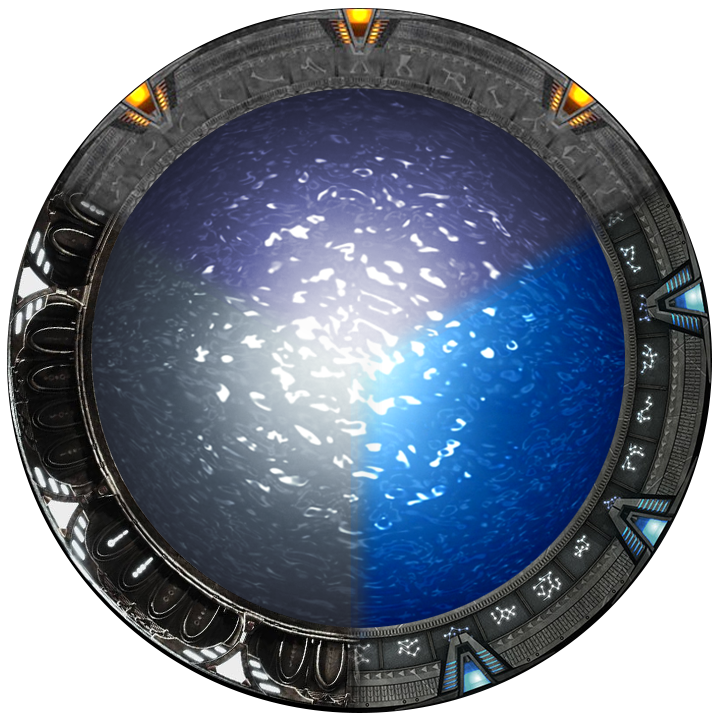The way mantis shrimp see is nonetheless super cool and interesting. They likely have no conception of 2D color at all, and can only sense the 12 different colors in general. Furthermore, only the midband of their eyes see color, when the eyes are moving and scanning for prey, they don’t see color at all, which probably helps offload mental load for their small brains. Once they do see something, they then stop moving their eyes to determine the color of what they’re looking at.
Also, mantis shrimp have 6 more photoreceptors in addition to the 12 colored ones, to detect polarized light. They likely see them the same way that they see color, so they probably don’t consider them anything different than wavelength which is what we interpret as color.
Ed Yong’s An Immense World has a section on this and I’d highly recommend it. The ways animals sense and perceive the world are often so different for ours and it’s so fascinating.
For anyone wondering why they would need to see polarized light: I actually looked into this a few months ago!
Other animals that are trying to blend in with the environment often use countershading appear less conspicuous. The problem with this is that this method can’t replicate the polarization of the light behind them, making them stand out if you can see that sort of thing. ((Sunlight in the ocean is always polarized based on the direction of the sun (look up fresnel equations for s and p polarized light))). Even transparent creatures will interrupt the polarization in some way, so this is a very useful skill to have.
More specifically, polarization changes with the angle of reflection of the surface towards the detector / eye / camera, so every bump in the surface gets a color gradient different from the surroundings when seen by a polarization sensitive eye
“Spiders can detect danger coming their way with an early-warning system called eyes.”
Really fantastic book. I did have some notes though. Firstly, if honeybees have such low dpi vision, how can they see each other dance? I assume it’s because they’re experiencing the dance some other way, but how? (Also it’s hella dark in there, isn’t it?)
He says many times that humanity’s umwelt is dominated by sight, but I very much disagree. To lose my hearing or sense of touch would make me feel quite blind, as I use them to perceive things outside my cone of vision constantly. Being in deep water is unnerving for this reason, because I can’t “see” what’s around me, and I have this whole new area below that I can’t hear either. So I have to wonder whether other people feel the way he does or whether my usage is more unique.
He really blew my mind when describing exafference and reafference because these things are reliant on a sense of self in the first place, which means that even the worm in his example must have some form of ego.
You show that you are dominated by sight even as you say you aren’t.
Losing your hearing or touch would remove peripheral senses, yes, and certainly that would be unnerving, but think how much worse it would be to lose sight. Hearing wasn’t even a factor for you beyond your peripheral, because what you can see is so much clearer, so much more comprehensive, than what you can hear, that hearing is negligible where you have sight.
Hearing is a backup sense. Something you lean on when you don’t have sight, but its fidelity is poor enough in people that we rely nearly wholly on sight, when we can.
Losing that cone of vision impacts us far more than our hearing, although of course losing either is massively detrimental.
I have heard that the incidence of suicide is higher in deaf people then in blind people, which would suggest that, while our senses are sight dominated, losing our hearing has a bigger impact in some way. That said I can’t find a citation for that, so make of it what you will.
Or maybe the blind people just miss more.
This is the best I could find on the specific topic: https://pmc.ncbi.nlm.nih.gov/articles/PMC7888369/
People with visual or hearing sensory impairments had twice the odds of past-year suicidal ideation (OR 2.06; 95% CI 1.17 to 2.73; p<0.001), and over three times the odds of reporting past-year suicide attempt (OR 3.12; 95% CI 1.57 to 6.20; p=0.001) compared with people without these impairments. Similar results were found for hearing and visual impairments separately and co-occurring.
Guess I was misinformed. Thanks for doing the legwork.
While sound is not nearly as dominant, it’s absolutely not just a backup sense. It’s the fastest perception we have (the best rhythm game players can play blind but not deaf), it covers all directions, and even in our sleep we still respond to loud sounds.
Sound perception is so fast that it’s often what directs you to look in the right direction, even if what you’re reacting to happened in your field of vision.
Funny enough, even our peripheral vision is faster than our central field of vision, to help us avoid predators coming from behind! Our forward directed vision is for tracking and understanding what’s in front of us, sound and peripheral vision is in large part for environmental awareness. They’re co-dependent!
Humans can even learn echolocation!
Hearing is a backup sense.
That might vary by person, but for me it’s not. If I had to pick between being able to see and being able to hear, it’d be hearing, hands down. Being able to see is amazing and I’d miss it, but hearing is just a whole other dimension.
Being able to know how someone is feeling, just by hearing their voice. Listening to music and hearing all the shapes, colors, and feelings that come with it. The colors aren’t always ones you can see, like blue or yellow. It’s hard to describe. I’ll close my eyes and just listen at a concert (not the whole time) and same with TV, a lot of times. I usually remember it better that way.
If I have to find something in a backpack, I’ll often do it by feel. I probably look like a raccoon washing its food, but it just works for me. You can tell things apart by feel and sound.
That’s neat.
It makes me wonder if your hearing is better than average or if your eyes are worse, making it not so clear-cut.
Do you need glasses, or have you ever had your hearing tested for whatever reason?
I don’t need glasses. Haven’t had my hearing tested, but I think it might be better than average. I can hear high frequencies annoyingly well, 20kHz or a little more (checked with a spectrum analyzer). It’s fun to listen to the high harmonics in music. Vacuum cleaners and electric cars are less fun.
I can usually hear my muscles and bones moving. It’s very quiet and low frequency, and the muscles rumble. I can usually tune it out though.
Your description of hearing shapes and colors sounds a lot like someone with synesthesia, a rare condition that’s seems to have no downsides and only benefits.
a rare condition that’s seems to have no downsides and only benefits.
A potential downside is sensory overload.
I don’t have it but one of my kids does. She sees colors with certain numbers and letters. Certainly doesn’t seem to have a downside for her and in my reading I haven’t heard of a sensory overload issue. Is this strictly related to the synesthesia or perhaps synethesia exaggerating an existing autistic or ADHD issue?
I’m AuADHD, myself, but do not experience synthesisia so that certainly colors my perspective. People with sensory sensitivities would definitely be more prone to experiencing challenges with synthesisia and sensory overload but anyone can potentially be impacted under the right circumstances. Particularly intense sensory stimuli can be stressful. Make it multi-sensory and the intensity level is effectively increased.
Children who are otherwise neurotypical can sometimes have a little bit of a harder time with stress and intense sensations, which can manifest as meltdowns and the like.
I can see only in a limited area at any given time, but I can hear in a full sphere around me simultaneously. I don’t think it’s accurate to characterize such a large area as “the periphery”. One sense is imprecise and covers pretty much everywhere while the other is detailed, but very limited. Both senses work in concert to build a full map of the world, and the loss of either is concerning. I’m more comfortable in a blindfold than isolating headphones though, because I can still echolocate while my vision is impaired, but my vision has no way of emulating hearing’s function. I’d have to be constantly looking around all over the place.
how can they see each other dance? I assume it’s because they’re experiencing the dance some other way, but how? (Also it’s hella dark in there, isn’t it?)
By touch. This 50s video shows it well.
Oh, I see. I thought they communicated much more complex information than that, but it’s very practical for simple directions with no further details.
Yup - as far as we know the dance conveys three pieces of info, about a food source:
- direction - by the direction of the waggling
- distance - by the duration of the waggling
- benefit - by how frequently they do it (based on the resources and potential predators)
They also release some pheromones while dancing, but I think that’s just to warn other bees “hey, someone is dancing in the hive”.
I think this speaks to a significant misunderstanding that most people hold of the way vision actually works.
Most people imagine that vision is a relatively simple process by which our eyes detect and transmit to us the nature of the world. Not so.
Eyes are complex and interesting organs in their own right but fundamentally what they do is relatively simple. They are able to detect and report to the brain certain qualities of the light that hits them. Primarily these are: intensity, direction, and proximity to three points on the frequency spectrum (what we perceive as red, green, and blue). But this data alone is not vision. Vision is a conscious experience our brains create by interpreting and processing this data into the visual field before us—basically, a full scale 3D model of the world in front of us, including the blended information on reflection and emission that color entails.
Quite amazing! Most of this takes place in the human brain, and not the eyes. From this perspective, it is not terribly surprising that an organism with more complex eyes but a much simpler brain might have worse vision than we do.
Ha! I read the following Science new article just today about how Purple Only Exists In Our Brains. It’s written for a younger audience (I think), but it lays out how our sight works, and how our brains trick us into seeing purple (a red-blue colour, as opposed to violet).
Poor shrimpos, no purple for them, I bet.
This phrasing always bothers me a little, because, as even the article quotes a scientist saying: “All colors are made up by the brain.”
Purple is special because it triggers from non-continuous wavelengths of light, not because the subjective experience of purple is an invention of the brain. Being ‘invented’ is something common to all colors. Or sounds. Or tastes.
It’s amazing and crazy to think, too, that the “theater” our brains create is an equilibrium point of laziness (to save energy) and usefulness (to help survival). So, surely, there are things we are just unable to see. But also, probably, there are different things that get mapped to the same things in the “theater.” I’m just speculating though but it makes sense.
It’s a good thing we can surpass the limitations of our perception by creating external tools that augment our senses and translate extra-sensory information about the world into something human perceptible. We’ve even gone so far as to send such devices into space.
We don’t really detect direction of light exactly. Instead we detect the location in the eye where the light landed, and have lenses to focus the light onto our retina. That relationship does imply some of the directionality of the light, by ignoring light that goes in certain directions and relating the direction of light that does get detected to the location it ends up.
By the same logic, we don’t detect light, just the change in shape of certain proteins. The sky isn’t blue, it’s a subset of sunlight. We don’t really touch things, we transmit forces with tiny magnets. Computers don’t really do math, they just arrange states in certain ways.
The world
is beautifulmakes my brain release endorphins
Yeah I was trying to avoid those details. I think it’s fair to summarize that as a system that detects the direction light is coming from.
*we detect the direction of light by the location in the eye…ect.
There fixed it for you.
ect.
etc. It stands for the Latin words et cetera.
You haven’t been saying ectcetera have you? Oh no.
Correctors better come correct.
Reminds me a little of CD digital audio. The original Red Book audio standard hasn’t really been improved upon because it’s uncompressed audio which covers basically all of the range of human hearing within the capabilities of any speaker we could build. It’s uncompressed because in the early 80’s when the tech hit the market, it was completely unfeasible to include the CPU and RAM needed to decompress audio in real time.
Shrimp has more color receptors because he doesn’t have enough neurons to run trichromacy, so he sees in EGA.
Shrimp has more color receptors because he doesn’t have enough neurons to run trichromacy, so he sees in EGA.
love this. nice job :)

I remember experiencing the EGA to VGA graphics evolution when I was growing up. I remember thinking the VGA almost seemed too real.
In my mind, this was a game that felt like it was pretend:

But this felt entirely too real:

Have you played The Crimson Diamond? EGA is back, baby!
If you love the old murder mystery games like the Laura Bow Mystery Series, you will enjoy this game
Oh man, I had completely forgotten about the old Laura Bow games! Might have to check this out!
Oh man.
12 year old me waiting for hours to rip mp3s from cds always wondered about this.
Like why isn’t it already compressed?
The answer is that storage was available but processing wasn’t. Amaze.
Mp3 is already compressed, as is the MP2 CDs use.
If it wasn’t conpressed, you’d be looking at CDs per track, instead of tracks per CD.
What are you on about? CD-DA, aka audio CD, aka red book audio, is uncompressed 16-bit PCM sampled at 44100Hz. It is lossless.
MP3 (MPEG-1/2 Audio Layer III) is a lossy encoding standard commonly used for online audio distribution and steaming. MP2 usually refers to MPEG-1 Audio Layer 2, which was most commonly used in Digital Audio Broadcast.
Neither are used in ‘regular’ CD audio.
I’d like to subscribe to the format facts newsletter. Can you do VHS next?
Each frame of video on VHS actually occupies a diagonal section of the tape. That allows the width of the tape to be effectively longer which means it can store more information. It’s also why the image will jitter a bit when the tape is paused since there’s multiple frames of data under the read head at any given time.
The round hole in the middle of the cassette near the tape path is designed to have a light bulb on a stick inserted into it.
Most of the tape is (approximately) opaque due to the magnetic recording media, but the very ends are transparent. If you open the cassette’s lid and look at the uncovered ends of the cassette, you’ll see a hole on each end that has a path through the cartridge to the light bulb hole, only interrupted by the tape itself. Photoreceptors in the VCR sit just outside those holes, and if light is detected it means that the clear leader is starting to unwind from the spool meaning the tape is over, so this is how the VCR knows to stop the tape. This is why so many VCRs and rewinders glow inside.
Later hardware swapped it for an infrared LED and detectors but still did the job optically.
It is lossless.
I’m not sure that’s the right word for uncompressed digital audio, because it’s lossless compared to what? Presumably an analog recording or the original input signal? Because Shannon-Nyquist, with CD audio you can’t get anything higher than what? 16kHz out of it, but within that limitation you can reproduce any arbitrary waveform within a speaker’s ability to produce given the laws of physics regarding inductance and inertia.
MP3 does use a lossy compression, but you can maintain listenable quality while cramming about 10 times as much audio into a given space. You can get just over an hour of Red Book audio on a CD, and about 11 hours of mp3s, give or take. You might get lower audio bandwidth or various kinds of artifacts but it’ll still sound pretty good, it’s way more practical to store and transmit over the internet. We didn’t Napster no .wav files.
FLAC and similar formats use lossless compression, kind of like a .zip file. If you rip a CD to FLAC, and you were to then burn a CD from that FLAC, the data on the new CD would be identical to the old one. So you get as-perfect-as-we-can-do digital audio, but only 5 or 6 hours worth would fit on a CD. Someone somewhere on this earth has filled a compact disc with FLAC files, I’m sure.
Is moral of your story that adults having frequency detection limited to 16khz, with older adults lower, might still be able to detect music well enough?
Horrible news
Ruined my day tbh
How did they test if they could see color? Did they make little shrimp dioramas or something?
They asked them politely
The easiest way is to use the principles of conditioning. Pair a stimulus with a certain color light, then start flashing up different colored lights. If the organism is cued to the stimulus by multiple colors of lights, it means that they can’t really distinguish between them.
That’s how we tested when kids lose the ability to distinguish certain phonemes.
it makes me happy when people understand science.
They give them a miniature color blind print that has those numbers in them that are hidden if you are color blind.
The shrimp are holier than we are because they cannot see the devil’s color (it’s pink 🩷)
You mean light red?
That is clearly embarrassed white
Blushing white lol
ITT: people saying pink (light red) when they mean magenta
I would say magenta is a different color than pink. But I was just making a joke about how there’s light bike and light yellow but if you add white to red it’s a different color
I need to use wherewithal more in my daily life
Every lunar month, when there is a full moon, i try quitting caffeine
werewithdrawal
(I initially misread you comment)
I wish I had the wherewithal to use it more often.
deleted by creator
That doesn’t make them fake, in the same way that x can mean 2. You are merely representing a given value (in this case light within a certain electromagnetic spectrum) in a useful way.
But is my red the same as your red? Hmmm?
if two people can both point to red and agree that it’s red, that’s close enough. anything beyond that is just pointless esoteric debate.
I disagree that it’s pointless. I think it may be beneficial to humanity (eventually) to establish whether or not there is an objective reality which we all experience.
i agree, but that’s a job for neuroscience, quantum mechanics, and psychology; not a pack of dorks on the fediverse.
But I want to contribute to humanity in a meaningful way!
-me, a dork on the Fediverse nearly incapable of contributing to humanity in a meaninful way
Hey now, you could be the person to force manufacturers to add a new type of warning label to random products!
buy guns
it’s more in the philosophy ballpark, which shapes the interpretration of methodology and the consequences, in my humble opinion.
But what if the dorks on the fediverse are scientists?
then by all means
There is no way to “establish whether or not there is an objective reality.” It’s a philosophical position. You either take the reality which we observe and study as part of the material sciences to be objective reality, or you don’t believe it’s objective reality and think it is all sort of invented in the “mind” somehow. Either position you take, you cannot prove or disprove either one, because even if you take the latter position, no evidence I present to you could change your mind because to be presented evidence would only mean for that evidence to appear in the mind, and thus wouldn’t prove anything. The best argument we can make is just taking the reality we observe as indeed reality is just philosophically simpler, but that also requires you to philosophically value simplicity, which you cannot prove what philosophical principles we should value with science either.
It was a joke?
hahaha?
Ehehehe
Some people see numbers instead/along with colors, and different people see different numbers, so I guess the colors might be different between people too
I would be way more surprised if people who saw numbers with colors all saw the same numbers.
deleted by creator
deleted by creator
Pink isn’t real. There is no wavelength of light that is pink.
Its bright red, maybe toward purple! Brown is dark orange.
Light frequencies between blue and red don’t exist.
This person colors
Clearly, it’s light-ish red.
deleted by creator
For pink light to be perceived, it needs red cones to fully react, and both green and blue cones to only partially activate.
https://gizmodo.com/if-the-color-pink-doesnt-scientifically-exist-why-can-1464266788
deleted by creator
Wavelength of green light = 550nm
Wavelength of pink light = N/A
deleted by creator
the brain’s actually trying to understand what things are made of, and it’s guessing at that based on the light that enteres the eye.
this is why when you pick up a thing outside and take it inside, it doesnt change color (edge cases exist), even though the light that reflects off of it into your eye absolutely changes a lot.
My whole world is crumbling
This is really cool, but it’s also over a decade old info. I remember growing up in awe of Mantis shrimp and then, as with all wonder, this was removed from my life in adulthood. :)
Thanks I was gonna check
Still one of today’s lucky 10K!
deleted by creator
Isn’t it amazing how birds reverse engineered airplanes?
Did a shit job of it too, got the wings all flapping around like a bunch of idiots.
I want to see a bird swing around its break as a propeller.
That’s silly thinking. Everyone knows birds aren’t real, so they’re just late-stage planes created by engineers forced to follow certain constraints.
Really wish talking about what shrimp see didn’t remind me that in farming them females have one eye removed to promote breeding
I am eternally gratefull the practice is forbidden in Europe in organic cultivation. It’s one of the small wins that fly under the radar. It’s still a long way to people choosing for organic, awareness is the start of every change.
Can’t fix what you don’t know is wrong.
Anyone who eats shrimp should absolutely read this.
But compared with human eyesight, they could still see more ‘colors’ - As we see (almost) the same white in incandescent bulbs as LEDs and fluorescents, they might actually see the component colors and their intensities.
Not unlike how we may hear a combination tone when multiple other tones are played, and hear the difference (or sum) of them.
How would you suggest they do that. White light near equally activates our 3 cones because all spectrums of light are in it.
White light near equally activates all 12 shrimp cones because all spectrums of light are in it.
Which spectrum of color is left out of white light that wouldn’t light up a cone associated with it?
Because white light from an LED bulb is not all spectrums of light. It’s 3. It’s pure red, pure green, and pure blue that stimulates our cones equally so our brain can’t tell the difference. Like how TVs can make any color out of just three colors of sub pixel.
White light from an incandescent bulb is all spectrums of light. Through a prism it makes a rainbow. White LEDs through a prism make three stripes. For more information of this and some visuals check out this article. https://en.wikipedia.org/wiki/Color_rendering_index
6500k vs 5000k is noticeable for humans
I… must… be… strong… must… not… do… it… must… resist… the urge…
🎵 But I’m only human 🎶
escondido
We got shrimp drama before GTA VI
Shrimply*






















